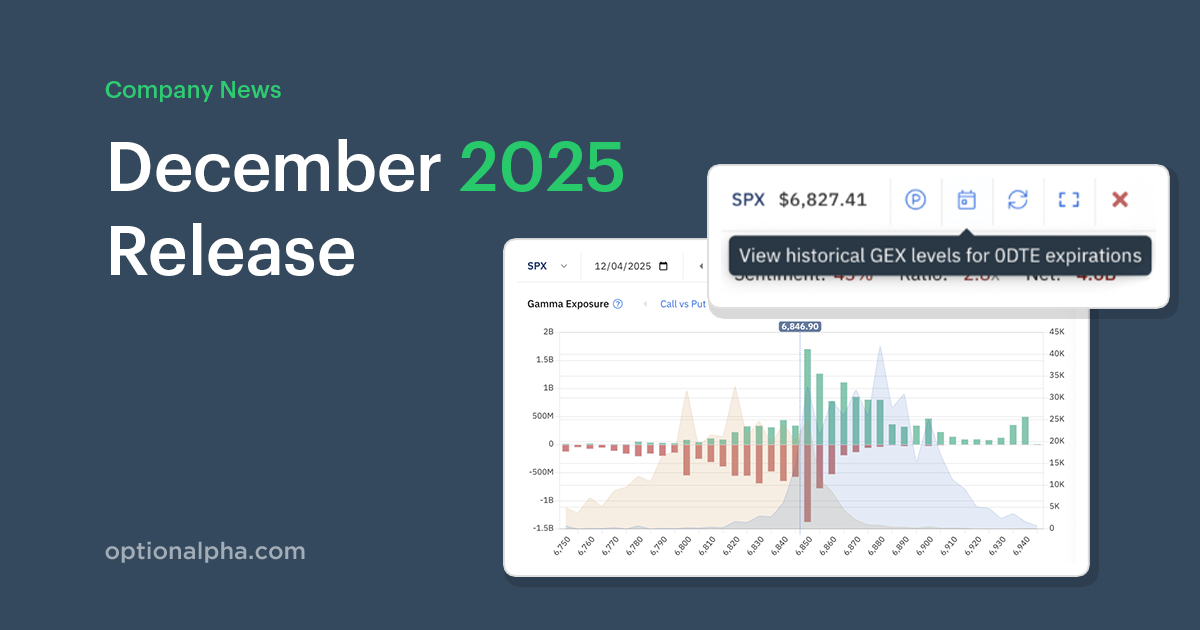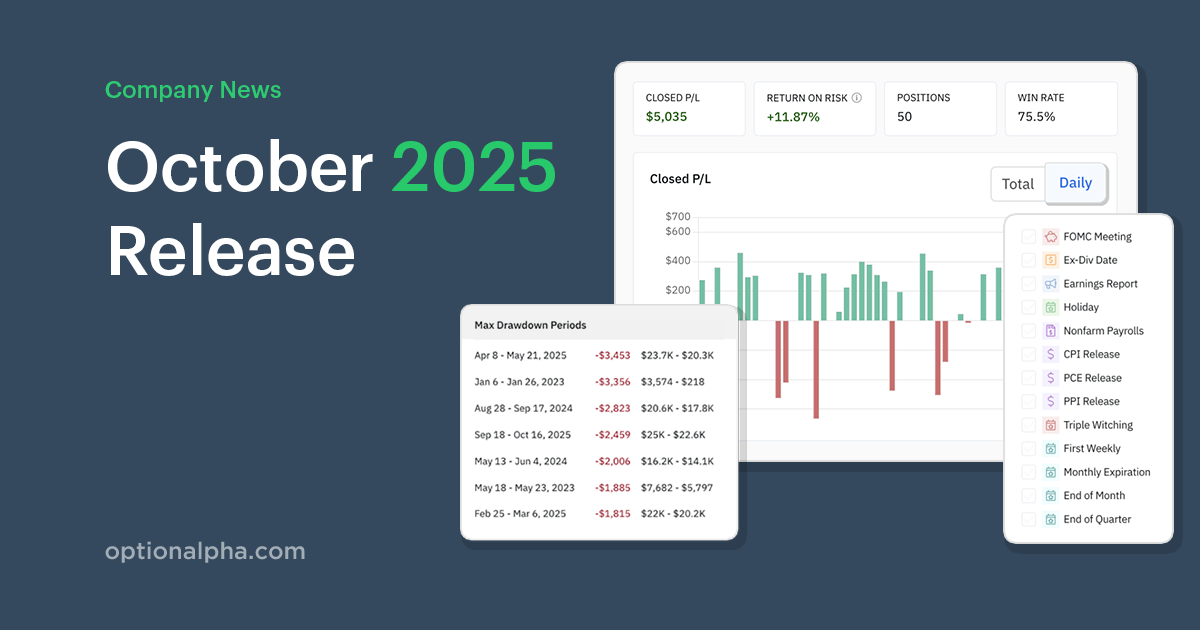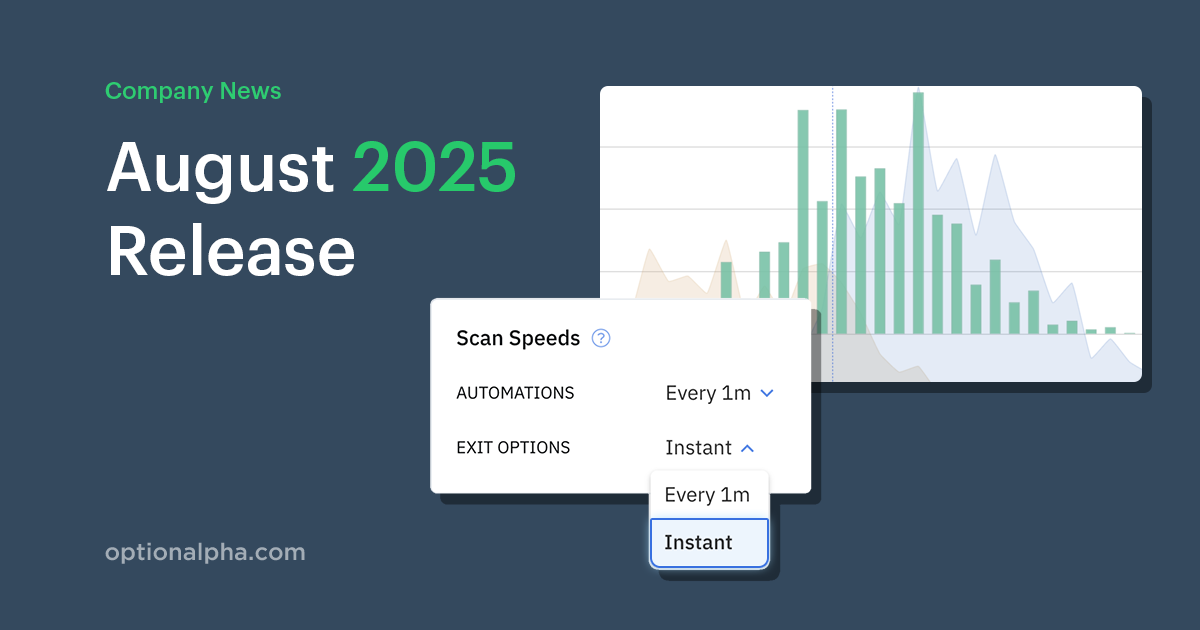Imagine you've been planning a trade. You researched the company, performed excellent due diligence, picked a strategy, and you're ready to open an options trade.
You enter an order for your contracts, wait awhile, and the order doesn’t fill. Why is it not getting filled?
Let’s take an in-depth look at the process of what happens when you submit an order and click ‘Place Trade,’ and explore some ways to optimize order entry for your options trading.
How do options orders get filled?
Once a trader places an order, it goes to the broker, who must decide how the order will be routed, and who will ultimately execute the trade.
How your broker handles orders
Your broker has four choices after you place an order:
- Send the order directly to the exchange
- Send the order to a market maker
- Send the order to an electronic communications network (ECN)
- Send the order to another internal department at the brokerage

Exchange
For stocks listed on an exchange, your broker may route the order to the exchange (like the NYSE). A common practice is for the exchange to pay the broker for their orders, known as ‘payment for order flow’ (PFOF).
Market maker
The broker may send your order to a third-party market maker who can fill the order and will pay the broker a fee for the opportunity.
Electronic Communications Network
ECNs are electronic networks that automatically match buy and sell orders, typically limit orders at a specific price.
Broker Internalization
If the broker has the contracts available and decides to fill the order internally, then they can complete the trade in-house and profit off of the spread. This may result in a faster order execution.
Why your order isn’t getting filled
There are multiple reasons why your order may not fill immediately. Markets are dynamic, and even though technology has made the order submission and execution process much faster and more efficient, it doesn't guarantee your order will fill. Here are a few key things to keep in mind when you place an order.
Order type: Limit order vs. Market order
If you place a limit order, there is a chance it will not be filled if the price of the contract is not reached. On the other hand, a market order will almost always be filled, but it may not be at an ideal price. The broker must take this into consideration when deciding how to execute the order.
Broker’s obligations
As a trader, you have some protection provided by the SEC that mandates brokers to give the best order execution available. If your order is not filled, then there may not have been an agreeable price for the contract you are trading.
Timing
Most trading volume is right after the market opens (9:30) and just before the market closes (4:00). Institutional investors, high-frequency traders, and professional investors place most of their orders at the busiest parts of the day, since they have the largest orders.
Big traders tend to slow down around lunch-time, which may be an ideal time for you to place some orders, since they will have a higher chance of being filled.
Gap
News events and market sentiment may result in a “stock gap,” which means there will be a discrepancy between the close price and the open price the following day.
This gap can cause the price to jump past your limit order before it is able to go through. For example, if AMZN closes at $50 and opens at $60 the next trading day, a call option’s value will increase. Assume the 50C closed at $1.55, and you set a limit order for $1.60 after hours, but the next day AMZN opens at $2.05. Your order won’t fill unless the option’s price comes back down to $1.60 or you cancel and replace the order.

Low volume and open interest
Low trading volume can prevent orders from being filled since every order needs a buyer matched with a seller. Blue-chip companies and other large corporations typically have plenty of volume throughout the day. Smaller companies do not have as many shares outstanding and thus do not have as many options contracts available to trade.
This is especially common if you place a large order on a contract that typically has low volume or open interest.
Options volume and open interest quantify the activity level between buyers and sellers of an option’s contract. Volume is the number of options contracts traded on a given day, while open interest is the number of open contracts that remain for an expiration. This includes contracts that have not been exercised, offset, or expired. Options contract volume displays that day’s activity, whereas open interest is the total number of contracts outstanding.
.png)
One way to work around this is to place smaller orders instead of one large order. That way, some of the orders can be filled, even if there is not enough volume for all of them.
Filtering for open interest is a great way to check if an option contract has sufficient liquidity, which impacts your ability to fill trades (and have more efficient pricing).
%20filter.png)
The Option Alpha trading platform also includes liquidity stats which help us filter for tickers with high liquidity and narrow bid-ask spreads.

3 adjustments to get your options order filled
- Adjusting Quantity of Contracts
Many clients place orders in multiples of five, such as 5, 10, 15, and 20. Lots of other traders are placing orders with the same quantity of contracts, which can work against your trade’s fulfillment since the brokerages are trying to fill the same orders for multiple traders.
Try adjusting your quantities down to odd numbers like 3, 7, 9, or 11 to increase the odds the broker is able to fill your order. Institutional buyers and other large investors trade enormous lot sizes, and utilizing these odd number orders can enable your trades to be bundled with other contracts.
Brokerages view these orders as “one-off.” For example, one trader may place an order for 4 contracts, and if you place an order for 6 instead of 5, then the two orders may be bundled as an order of 10.
- Avoid Round Number Pricing
The price you enter for a contract is treated similarly to the order size. Round numbers like $200, $150, and $25 are used by the big traders.
Use prices such as $23, $62, $199, etc. because the broker is more likely to match you with someone near your price, instead of ignoring your order in place of a larger one.
Changing the price can be an effective strategy to achieve the fulfillment and quantity of contracts that you want.
- Utilize the Optimal Order
When you place an order for trade entry, you want it to go through, but you also want to ensure you pay the right price. The last thing you want is to place a market order thinking that you will get a contract for $3.25, and realize that it went through at $4.00.
By combining limit and stop orders, you can set a wider range to ensure that you get a price that you want, but not at the risk of overpaying for the security.
Limit
Limit orders go through when the option reaches a predetermined price or better.
For example, an investor wants to purchase a call option for ABC Inc., which last closed at $2.33. ABC Inc. is scheduled to release earnings this week, and you want to lock in the option under $2.40 because you think that they will beat the earnings expectation.
You can submit a limit order at $2.40, which will go through as long as the price does not go above $2.40 at the open.
Stop
If you want to ensure that an order goes through, a stop order can be a great decision. A stop order turns into a market order once the stop price is reached.
Let’s say that you want to buy an OTM put that closed at $0.65, and you set a stop price for $0.68. Now imagine many other traders placed similar orders because of a prevailing bearish sentiment on the company. Once the market opens, the contract may jump to $0.70, which will turn your stop order into a market order.
As you can see, stop orders can be excellent for getting into a position; however, there is a risk that you will get stuck with a price that is much higher than you were anticipating. In the same example, the option may open at $0.80 or more due to events that took place overnight. Your order would still go through, but you may pay a much higher premium than you had hoped for.
Stop-Limit
By combining Stop and Limit orders, you get the best of both worlds. Setting the stop ensures that your order gets through, and the limit order prevents you from paying more than you want for the trade.
With our example above, we can set a stop price for ABC Inc. at $2.35, and a limit price of $2.42. This would give us a wide range where the order will be filled anywhere between these two prices, but it will not be filled once the price exceeds the limit.
Combing orders like this is especially effective for securing a position in a high-volume trading session. Your order can be filled in a scaled manner, with some contracts purchased on the low-end of your range, and some on the higher end.
SmartPricing: An automated solution
SmartPricing is Option Alpha's proprietary technology that uses timed intervals and adjusts pricing dynamically to optimize entries and exits.

SmartPricing evaluates bid-ask spreads and adjusts pricing on-the-fly, canceling and replacing rapid-fire orders automatically as it works through the bid-ask spread. With customizable settings and full control, you never have to chase the markets.
Final thoughts: How to get your option order filled
Patience
Remember, option prices can be extremely volatile, and if you are trying to enter into a position at a favorable price, you may need to wait. The market open can be a frenzy of activity where your order can be overlooked.
If you rush your trades or start using too many market orders, you could sacrifice potential profit.
Planning
Once you decide on a trading strategy, map out how you will set up the trade. Ask yourself if many other traders are implementing the same strategy. If you think that there is a chance that your order may not be filled as-is, tweak the price, adjust the quantity, or try placing the order after the high volume in the morning.
Perseverance
Just because your order wasn’t filled, does not mean you have lost the opportunity to trade that contract. By utilizing the tips outlined in this article, you should be well on your way to more efficiently executed orders.




.png)









